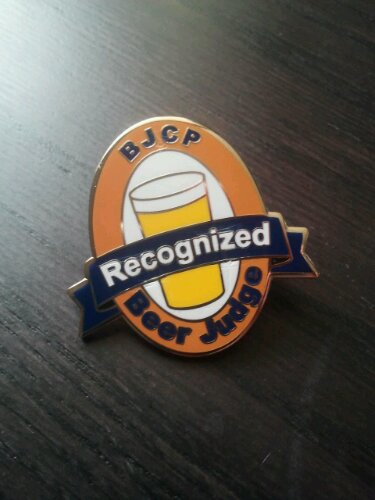The intention of this graph is to help those studying for the BJCP Written Exam in prioritizing which styles to focus on for the compare/contrast portion.
Category Archives: BJCP
Recognized
It’s official.
Just Passed the BJCP Entrance Exam.
After mostly correctly answering 200 randomly questions on all aspects of brewing, beer styles, and running BJCP competitions, I’m now a Provisional BJCP Judge. Woot. Now to study for the tasting exam.
The Road to Beer Judging Certification: Light Hybrid, Amber Hybrid, German Wheat & Rye
This week we worked our way through Light Hybrid (6A. Cream Ale, 6B. Blonde Ale, 6C. Kölsch, 6D. American Wheat or Rye), Amber Hybrid (7A. Norther German Alt, 7B. California Common, 7C. Düsseldorf Alt) and German Wheat and Rye (15A. Weizen, 5B. Dunkelweizen, 5C. Weizenbock, 5D. Roggenbier). The hybrid categories are that blurry line between …
The Road to Beer Judging Certification: European Amber, Dark Lager, Bock
This week we worked our way through European Amber Lagers (3A. Vienna Lager, 3B. Oktoberfest), Dark Lager (4A. Dark American Lager, 4B. Munich Dunkel, 4C. Schwarzbier) and Bock (5A. Maibock/Helles Bock, 5B. Traditional Bock, 5C. Doppelbock, 5D. Eisbock) The overwhelming attribute of these 3 styles is a prominent toasty, sweet, and complex malt aroma – …
Continue reading “The Road to Beer Judging Certification: European Amber, Dark Lager, Bock”
The Road to Beer Judging Certification: Light Lager and Pilsner
This week’s BJCP class was Light Lager and Pilsners – which is to say, beer I haven’t drank in 15 years. And oh how the quickly the memories returned; the smell of DMS and hormonal college kids in a cramped basement, the epiphany that is the first sip of a Spaten Pils, constantly asking yourself …
Continue reading “The Road to Beer Judging Certification: Light Lager and Pilsner”
The Road to BJCP Certification
A year and a half ago when I started formulating my own beer recipes – my friend Chris asked me if I had looked into hopville.com. Since then, Hopville has helped me understand and target the bounds of beer styles. By the numbers. But not by the ingredients. Even in the latest iteration Hopville warns …
